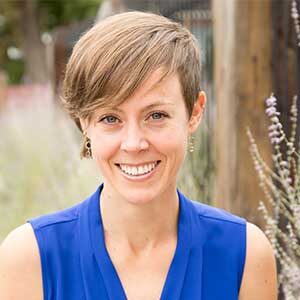What do your community’s streets look like today? In Denver, we have seen a massive transformation in just a few short months. As we entered 2020, we were experiencing ever-increasing traffic congestion as our city continued to grow. Then almost overnight, the streets became empty as people tried to understand and comply with the new stay-at-home order. Little by little, our streets began to fill back up with people walking, biking, and recreating.
Where rush hour traffic inched by only a few months ago with barely enough room for cars, the roadway is nearly empty. In contrast, many urban sidewalks are now viewed as ‘too narrow’, and parks and recreational trails ‘too crowded’ as demand for walking, rolling, and biking surges. We will soon see many people sitting in the streets for socially distanced, al fresco restaurant experiences.
How have other cities adapted?
The pandemic guidelines are causing us to reimagine the use of our public spaces. Streets are suddenly being repurposed to enhance public health and jumpstart economic recovery at a scale that was previously inconceivable. The public health benefits of outdoor movement are well-understood. Similarly, reopening the restaurant industry, which employs 15 million Americans, will significantly benefit our economy.
- On April 10th, Oakland, CA closed 74 miles of roads for walking and wheeling, a full 10% of their street network.
- On May 4th, Tampa, FL started a 14-day pilot program to experiment with “business recovery zones,” which allow tables and chairs to be placed in the street to help restaurants expand their capacity.
- On May 7th, Seattle, WA announced they would be permanently closing 20 miles of their street network for people walking and wheeling.
- On May 15th, Cincinnati, OH allowed 25 restaurants to expand their outdoor seating into the streets to draw customers and stimulate business.
- Internationally, Montréal has already created 98 miles of expanded sidewalks, instituted a network of Slow Streets where cars are not permitted, and plans to create 64 miles of new bike and pedestrian facilities in June.
- Milan has striped a short-term parking lane for delivery and emergency vehicles between the through-lane, and the wide lanes have been freshly striped for walking and wheeling.
These experimental reallocations of public space are not the types of projects State and Local DOTs have traditionally moved forward. Now, as an engineer myself, I understand both the value of innovation and the traditional limitations of our profession. But we are entering a new moment in time. We can and we will collaborate and improvise to try new things. In fact, it is imperative that we do so for the sake of our economic recovery.
People are ready to gather again, craving the social cohesion of being among strangers, laughing together at a drive-in movie or dancing at an outdoor performance. As social distancing guidelines allow us to share public spaces again, albeit with some major modifications, engineers can respond with new solutions.
Change offers opportunities for growth
This could be a great opportunity for experimentation—rethinking modal hierarchy, the allocation of space between modes, and how to influence future mobility and travel trends. We can elevate the community-driven projects that residents and business owners want to see installed in their own neighborhoods. They are often the people with the best ideas, but they can run out of road if they are unable to formalize their ideas and get support from their municipalities. We can help them walk that last mile.
Transportation engineers have the opportunity to employ our experience with complete street and tactical urban design to help balance safety and accessibility for all modes. We can provide access for emergency vehicles, transit, people with disabilities and elderly patrons; we can redefine curbside management, and streetscape design. With the help of our communities, the Mead & Hunt team is dedicated to reimagining our streets to put people first.



